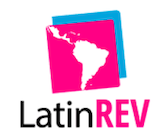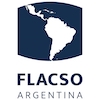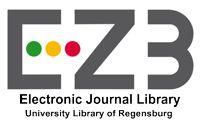Think photographs - seduce words
##plugins.themes.bootstrap3.article.main##
As a consequence of the indifferent of the students about the reading and writing processes, the teachers must adopt strategies (Didacticas-pedagogicas) to make them appreciate this process for their learning.
From our experience as teacher investigators of reading and writing processes in the room class, we were able to determine that we linking activities of observation, recognition and appreciation of photographic images that are part of the daily lives of our students, has created advantage opportunities for the academic processes of learning, so that the project: "PENSAR FOTOGRAFÍAS - SEDUCIR PALABRAS" came up to determinate the use of documental photography in the student's reading processes of 6th and 7th A, 7th B degrees, and also 8th from the Naranjal Institution in Timaná - Huila.
This mixed focus oriented the investigation, to specifically the sequential explanatory design (DIMPLES). As a quantitative investigation strategy, we used a diagnostic inquiry to begin the process and another to finish the same one. As qualitative research strategy we used a field dairy and participant observation.
It was compiled investigation results made by different people using the photographic as a didactic -pedagogic element into the education process, the theorical basis were according to concepts related to the (didactical) function of the image as enhancer of meaning and to didactic and pedagogical theories that allows being used in the school environment with the image.
Downloads
##plugins.themes.bootstrap3.article.details##
ARNHEIM, Rudolf (1997). Arte y percepción visual. Segunda edición. California: Alianza Forma, decimocuarta impresión.
ARNHEIM, Rudolf (1986). El pensamiento visual. Primera edición. Barcelona: Paidós.
AUMONT, J. (1992). La imagen. Barcelona: Paidós.
DÍAZ, Á. M. (2009). Imagen y pedagogía. Cuadernos de Lingüística Hispánica, (13), 143-154.
DICCIONARIO DE LA REAL ACADEMIA ESPAÑOLA {En línea}. Consultado diciembre 2014} Disponible en:
GADOTTI, Moacir. Paulo Freire, su vida y su obra. Primera edición: CODECAL http://buscon.rae.es/drae/srv/search?id=4k4Fsa7mdDXX20XX2B5r
RIGO, D. Y. (2014). Aprender y enseñar a través de imágenes. Desafío educativo. ASRI: Arte y sociedad. Revista de investigación (6), p. 6.
SÁNCHEZ Vigil, Juan Miguel; Olivera Zaldua, María; Marcos Recio, Juan Carlos (2014). Modelos para el uso de la fotografía en la docencia: El proyecto Imaginando. // Ibersid. 8, p. 33-41. ISSN 1888-0967.
CONCEPTUALIZACIÓN TIPOS DE FOTOGRAFÍA {En línea}. Consultado diciembre 2014 Disponible en: http://www.tiposde.org/general/482-tipos-de-fotografia/
CONCEPTUALIZACIÓN TIPOS DE FOTOGRAFÍA {En línea}. Consultado diciembre 2014. Disponible en: http://es.wikipedia.org/wiki/Fotograf%C3%ADa_documental
DEFINICIONES Y CARACTERIAZACIONES DE LA PALABRA IMAGEN {En línea}. Consultado febrero 2015 Disponible en: http://glossarium.bitrum.unileon.esHome/imagen
































